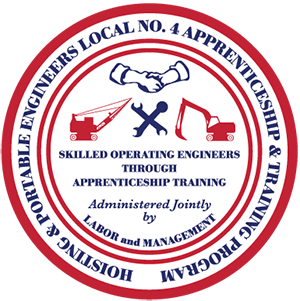Brothers and Sisters,
I’d like to congratulate Business Manager William McLaughlin on his recent appointment as Trustee to the IUOE. It will be great to have Bill’s representation as a Trustee with the International.
With an increase in construction work on railways in the area, this Safety Corner will touch on Railroad Workplace Safety, which can be found in the Federal Railroad Administration Regulations, 49 CFR Part 214. The purpose of Part 214 is to prevent accidents and casualties to employees involved in certain railroad inspection, maintenance, and construction activities. When working for the MBTA or Keolis, for example, a Roadway Worker Protection certification card is required when on their property. This certification must be renewed annually.
A Roadway Worker is defined as: “Any employee of a railroad, or of a contractor to a railroad, whose duties include inspection, construction, maintenance or repair of railroad track, bridges, roadway, signal and track communication systems, roadway facilities or roadway machines on or near the track or with the potential of ‘fouling a track.’” Understanding the definitions and terminology used in railroad workplaces is crucial to remaining safe while performing maintenance and construction tasks. Safety directives such as knowing the working limits for the “hi-rail machine” you’re operating will help determine boundaries to operate safely within. Also, knowing the work zone for other machines operating in the construction area will help establish additional safe work practices.
In addition to the unique terminology used when practicing on-track safety, the machines themselves have different requirements when performing track work, and may be referred to as “Roadway Machines.” These hi-rail-equipped pieces of equipment are used in the maintenance, repair, and construction of tracks and bridges. There are additional requirements for machines to operate on the rail to include specific lighting, horns, fire extinguishers, and annual inspections to name a few. Any non-complying condition that cannot be repaired immediately shall be tagged and dated in a manner prescribed by the employer and reported to the designated official. Some examples of non-complying conditions are as follows:
- An on-track roadway maintenance machine with headlights or work lights that are not in compliance may be operated for a period not exceeding seven calendar days and only during the period between one-half hour before sunrise and one-half hour after sunset.
- A portable horn may be substituted for a non-complying or missing horn for a period not exceeding seven calendar days.
- A fire extinguisher readily available for use may temporarily replace a missing, defective, or discharged fire extinguisher on a new on-track roadway maintenance machine for a period not exceeding seven calendar days, pending the permanent replacement or repair of the missing, defective, or used fire extinguisher.
- Non-complying automatic change-of-direction alarms, backup alarms, and 360-degree intermittent warning lights or beacons shall be repaired or replaced as soon as practicable within seven calendar days.
- A structurally defective or missing operator’s seat shall be replaced or repaired within 24 hours or by the start of the machine’s next tour of duty, whichever is later. The machine may be operated for the remainder of the operator’s tour of duty if the defective or missing operator’s seat does not prevent its safe operation.
This is just a brief overview of the many detailed regulations that are required to work safely when operating out on the track.
I hope you and your family have a SAFE and fun holiday season.
